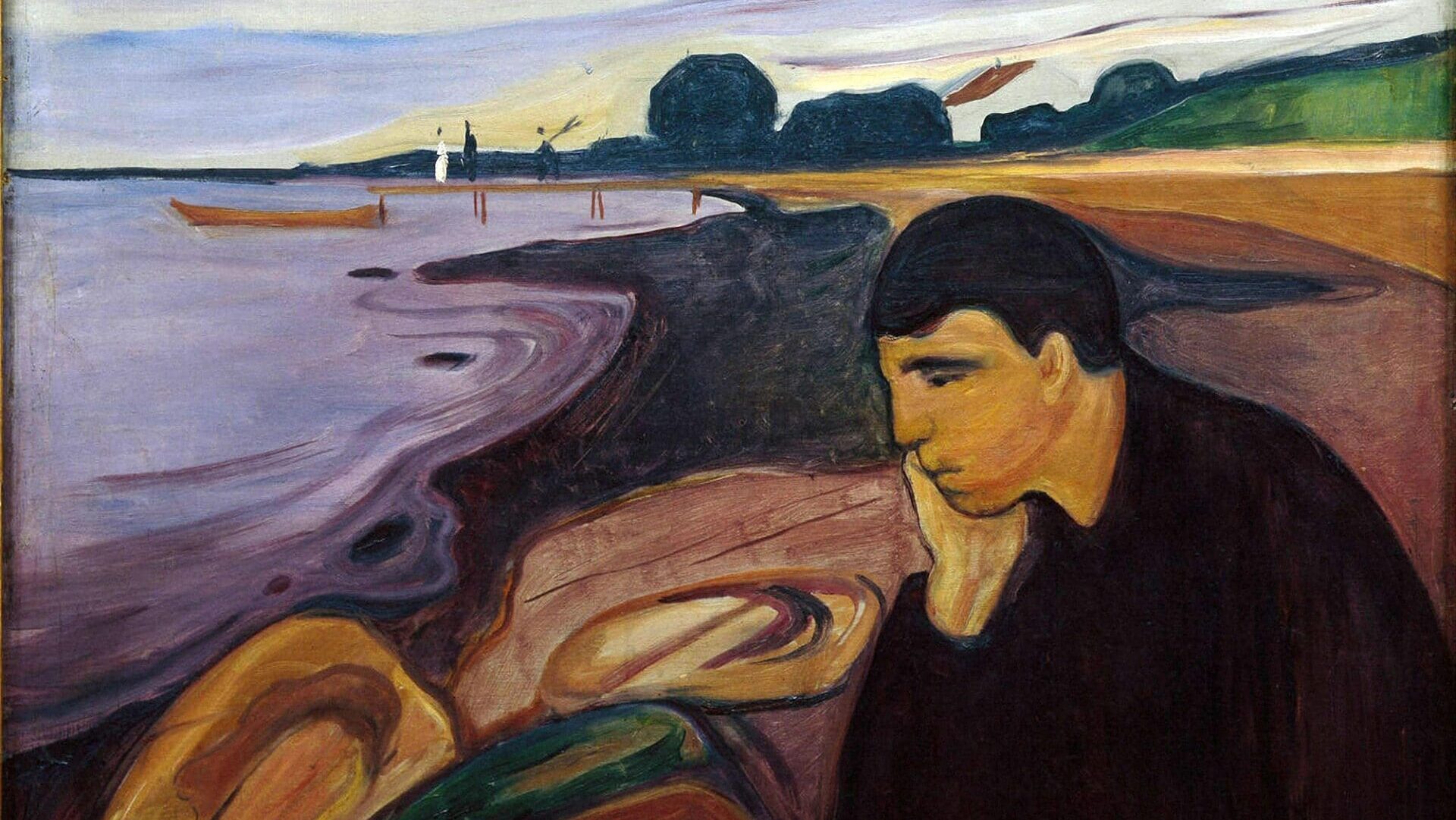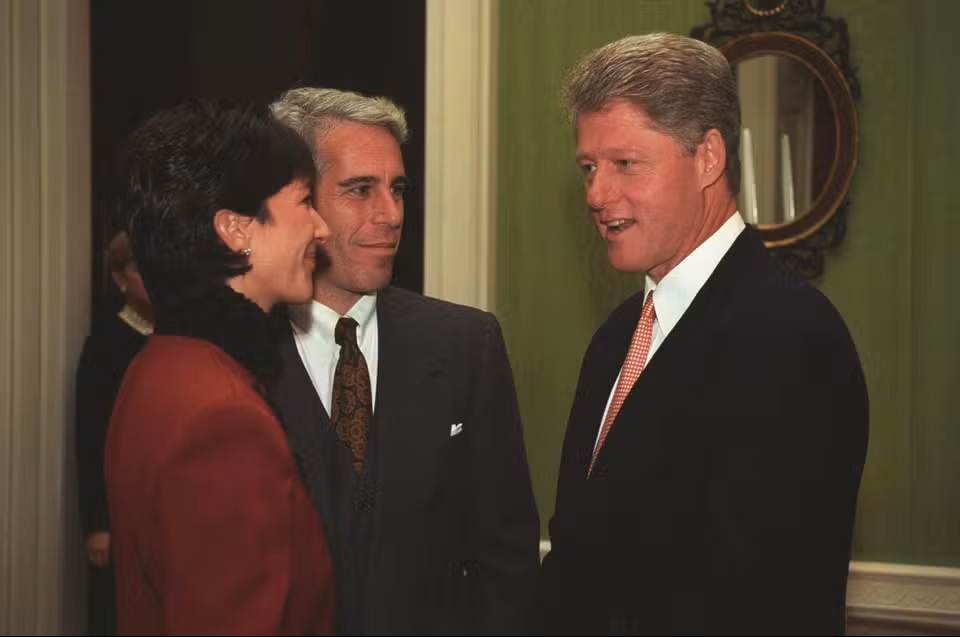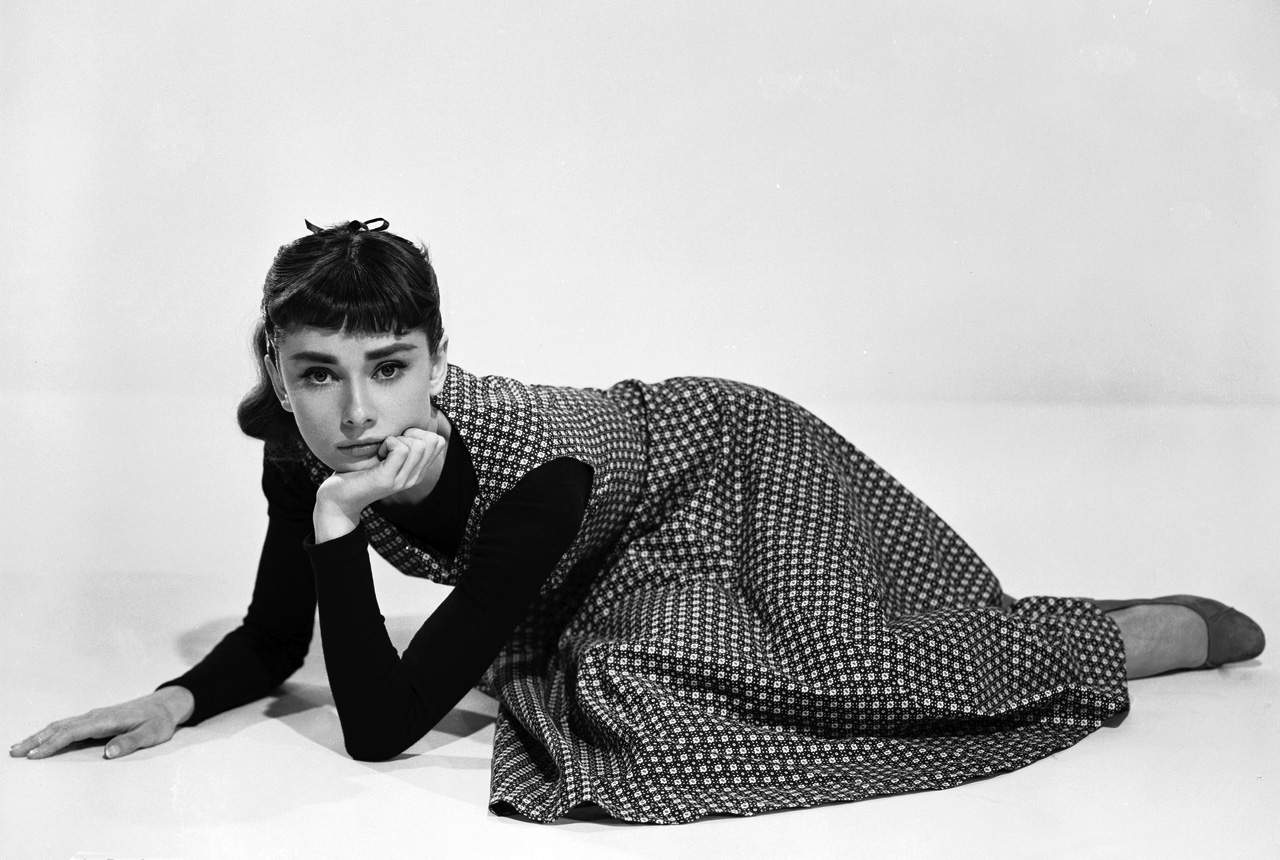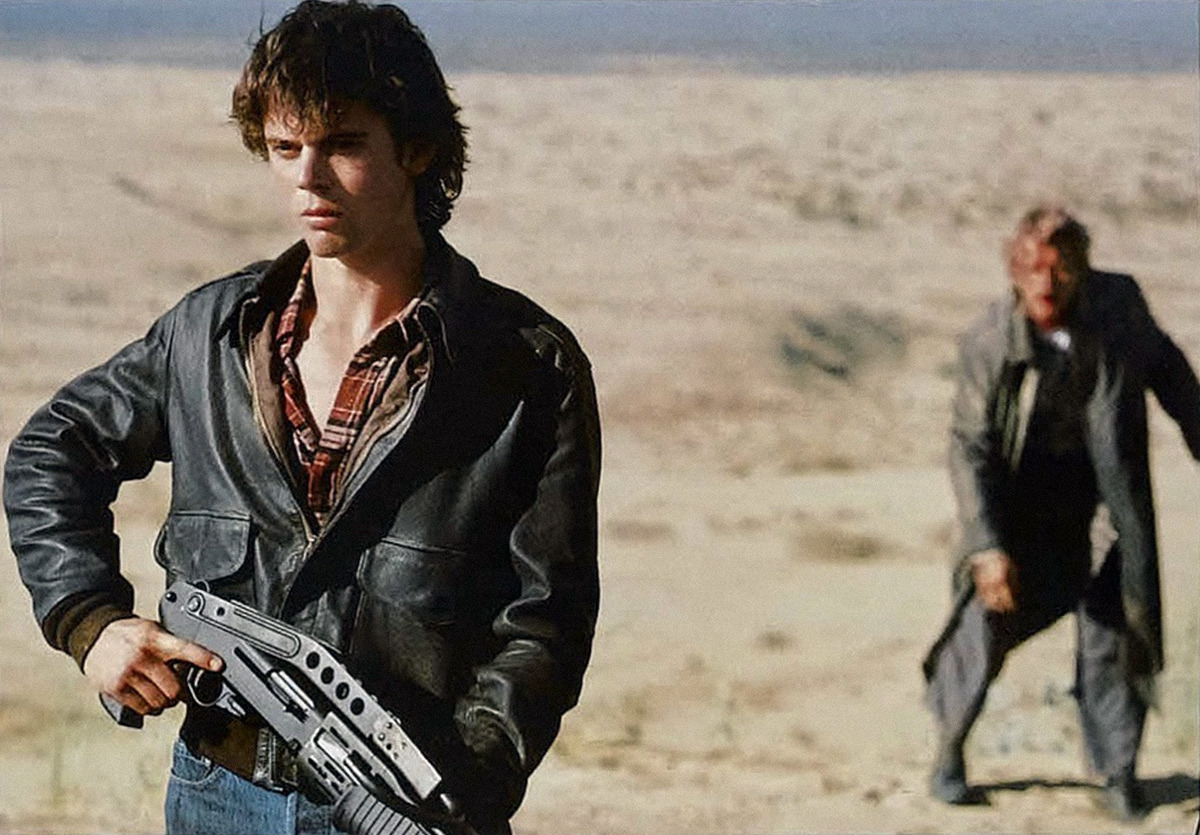
As hard as it is to believe, I’ve only recently watched that Hitchcock classic, Psycho (1960), and boy, does it 'deserve' its reputation.
By Emad Aysha
Psycho has more in common with SF movies like Alien and The 10th Victim (1965) than with thrillers like Silence of the Lambs, Red Dragon, Seven and Manhunter. Thrillers are about nabbing the bad guy, making you wonder how they're going to do it; will the lousy guy slip up, will the cops figure out his diabolical plan, what is his diabolical plan to begin with?
Psycho isn’t like that at all. It’s a drama, a commentary on people’s lives. It’s meant to make you feel sorry for the primary victim, Marion Crane (Janet Leigh), and the assailant Norman Bates (Anthony Perkins). It’s almost a tragedy. You invest so much in the characters, having got to know them so well, that you feel terrible for them.
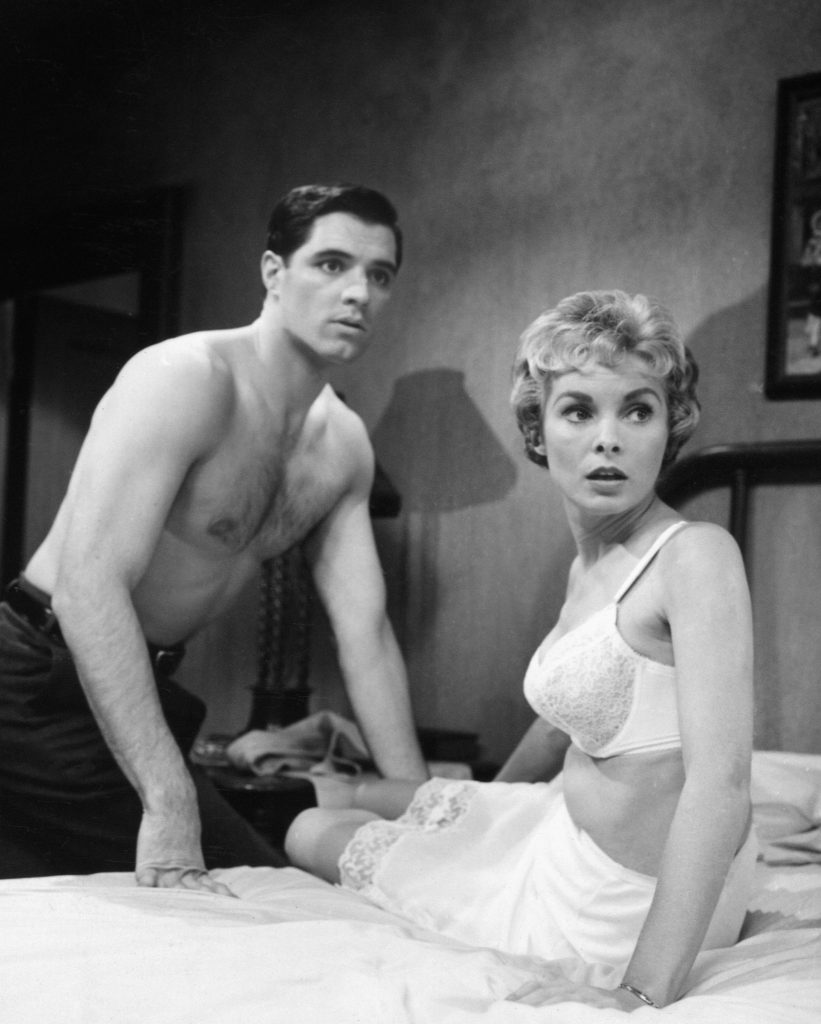
Marion made a terrible mistake, stealing money from her boss for all the right reasons and wanting to help out her lover boy, who’s knee-deep in debt and so can’t afford to marry her. He’s a good guy himself, responsible and hardworking, and a man’s man, but he's stuck in a dead-end job. And he wants to do the right thing, marry her and legitimize their behind-the-scenes relationship.
But she makes amends before it’s too late, after her cathartic conversation with Norman, deciding to head straight back to Arizona and give the money back. Only for her to be killed at that moment of moral and emotional elation, by you-know-who, in the most horrible, tragic way possible.
It’s not gory at all. It’s actually quite sanitized. It’s how helpless she is, watching the life drain out of her and seeing her glazed eyes and little droplets that look like tears next to them. The same goes for poor Norman, someone who starts out as a peeping tom and then decides to confront his mother.
He doesn’t know how to lie, so the private eyes suspect him. You even feel sorry for the private eye, since he goes through a character arc, going from cynical and jaded to trusting Marion’s sister and boyfriend.
Again, he’s killed at the worst time possible. (Please watch Whimsory’s reaction and Shree Nation’s for excellent reviews.) The movie is genius in the way it presents the story and characters to you, through a combination of close-ups, internal monologues, and funny, touching and ridiculous situations.
The cinematography gives you a sense of foreboding with shadows hiding facial expressions, while lighting exaggerates the eyes or lips. The music is full of urgency and tragedy, about lost opportunities and wrong turns you make – drama, not horror.
Kudos also to the set design. The internals are lush. The motel is fancy, not what you think of as a motel in a country like America. The only room with bird pictures is the one given to Marion ‘Crane’.
This is even truer in the house up on the hill, looking down in sinister fashion at the motel and shrouded in darkness. But on the inside, the furnishings are very nice and even posh, with antiques, colourful and expensive carpets, bronze busts, and other things.
There’s lots of cute social commentary, too, with the honest used car salesmen (almost a contradiction in terms), the heavy-handed cop, the wealthy drunk client, Marion’s colleague at work (Hitchcock’s daughter) who uses tranquilizers in bed, Marion’s very honest sister, etc.
It’s a colourful portrait of society at that point in time, which is why it connects to sci-fi on account of world-building. The 10th Victim is a dystopian Italian movie in which world peace is maintained through people hunting each other for money.
This is satire but also commentary on Italians and their problems. It operates again by making you love the hunter and prey, who both get eliminated tragically by the end, for using love as another means towards peace. (The hunted has to hide his parents from the population control authority.)

FAVOURED TARGET: In this minor Italian masterpiece Marcello Mastroianni proves how flexible black and white are when the world is turned into a giant colosseum.
The music is funky as hell, too, with Spartan set designs that are retro-futuristic and affordable. This slice-of-life approach can actually pop up in horror, such as The Hitcher (1986). While gory, that horror classic also emphasises social commentary.
People heading to California to pursue their dreams, and people coping with shitty jobs, and cops being trigger happy or incompetent. Even the bad guy, the horrendously effective Rutger Hauer, is a tragic figure in his way, getting himself caught when he murders the girl (Jennifer Jason Leigh).
He doesn’t really have any control over himself, and doesn’t seem to mind the consequences. He just wants to make a point, how you have to be ruthless to survive, which is why he taunts his victim and pursues him in very dreamlike, unreal scenes
See how he gets the kids to shoot from toy guns. The cinematography has a black-and-white feel to it, especially the lighting. The music’s great, too, more tragic than exciting.
The lethargic slowness of scenes also builds tension while allowing you to appreciate the mundaneness and grind of daily life in this slice of America – hence, truckers in space when it comes to Alien.
Ironically, the only other movies I can think of that operate on the same wavelength are humorous dramas like American Graffiti (1973) and Desperately Seeking Susan (1985). They all give you slices of Americana and how pathetic certain people’s lives can be, and how they cope with the mundane and with stress.
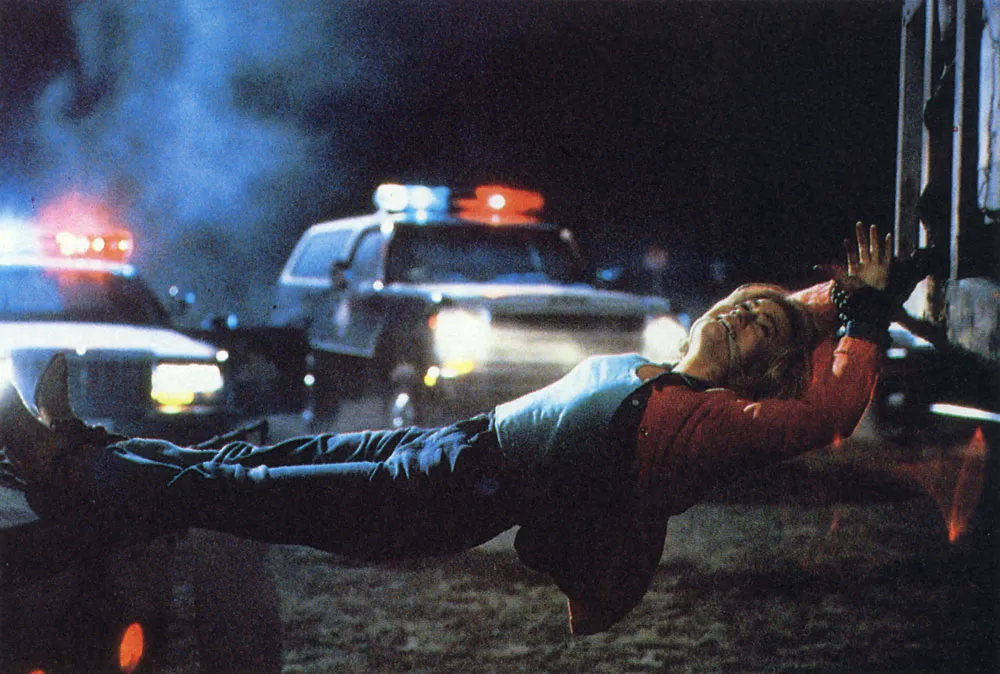
SPLIT PERSONALITY: Jennifer Jason Leigh as a victim of more than circumstance in this schizoid slice of Americana.
If only Alfred Hitchcock had gone into science fiction, the world would be less psychotic!


